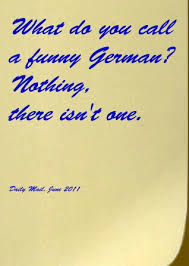 GBPicsOnline.com
GBPicsOnline.com
November 27 marks the 1st Sunday of Advent in 2016. It is the first of 4 Sundays in the countdown to Christmas. I did not grow up in a church denomination that celebrated the Advent season liturgically like Catholics, Lutherans, Anglicans, or Episcopalians might, but I think it is a wonderful concept. Advent is a Latin-derived word that means "coming." The season anticipates the arrival of Christ at his birth, into our hearts, and keeps us looking for His second coming not as a baby but as a Judge and King.
I do have an Advent wreath which I bought when we were stationed in Germany with the Army. A typical German advent wreath is made up of greenery and has 4 pillar candles of whatever color you prefer. A traditional church advent wreath will probably have tapers in the colors purple or blue, pink, and white. Each denomination has its own color scheme with certain symbolism. I think the violet/purple indicates hope, preparation and love; the pink/rose is for rejoicing; and often a white 5th candle is lit on Christmas day representing Christ, the spotless Lamb of God.
My children also enjoy Advent calendars. Our local Aldi grocery store always sells Advent calendars with little chocolate treats for each day - the simple one is generally 99 cents and the fancier one is $4.99:
However you may celebrate the first Advent Sunday, I hope you will consider the true meaning of this season today. Commercialism and the stress of buying gifts, decorating, parties, and activities can often crowd out the rememberance that JESUS was born! Savior, Emmanuel, God with us.
There is a lot of Christmas music playing these days, but only a few songs are considered Advent songs. One of my favorite Advent hymns during this season is O Come, O Come, Emmanuel:
This ancient advent hymn originated in part from the “Great ‘O’ Antiphons,” part of the medieval Roman Catholic Advent liturgy. On each day of the week leading up to Christmas, one responsive verse would be chanted, each including a different Old Testament name for the coming Messiah. When we sing each verse of this hymn, we acknowledge Christ as the fulfillment of these Old Testament prophesies. We sing this hymn in an already-but not yet-kingdom of God. Christ's first coming gives us a reason to rejoice again and again, yet we know that all is not well with the world. So along with our rejoicing, we plead using the words of this hymn that Christ would come again to perfectly fulfill the promise that all darkness will be turned to light. The original text created a reverse acrostic: “ero cras,” which means, “I shall be with you tomorrow.” That is the promise we hold to as we sing this beautiful hymn.
Source
1 O come, O come, Immanuel,
and ransom captive Israel
that mourns in lonely exile here
until the Son of God appear.
Refrain:
Rejoice! Rejoice! Immanuel
shall come to you, O Israel.
2 O come, O Wisdom from on high,
who ordered all things mightily;
to us the path of knowledge show
and teach us in its ways to go. Refrain
3 O come, O come, great Lord of might,
who to your tribes on Sinai's height
in ancient times did give the law
in cloud and majesty and awe. Refrain
4 O come, O Branch of Jesse's stem,
unto your own and rescue them!
From depths of hell your people save,
and give them victory o'er the grave. Refrain
5 O come, O Key of David, come
and open wide our heavenly home.
Make safe for us the heavenward road
and bar the way to death's abode. Refrain
6 O come, O Bright and Morning Star,
and bring us comfort from afar!
Dispel the shadows of the night
and turn our darkness into light. Refrain
7 O come, O King of nations, bind
in one the hearts of all mankind.
Bid all our sad divisions cease
and be yourself our King of Peace. Refrain















































